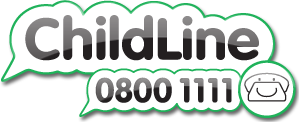Organisation and Engagement
How to use a task management board:
Objective: These boards provide children with a sequence of tasks to carry out in order, for example when getting ready for PE or writing a story. That may include picture representations of steps to complete the task. See the example below.

When to use: They are used to develop independent working for children who struggle to stay on task. You can add a reward at the end to motivate children to complete the task, for example, a sticker or house point, or 5 minutes on the computer.
You could print out and laminate the Task Management Board of your choice or you could use a digital copy on the computer. Use the icons to fill in the board, or get the child to draw their own steps. You can make these up for any routine throughout the school day.
Always go through the board with the child before the task begins, making sure they understand the icons. Make up your own individual icons or ask children to draw the icons themselves, so long as it is clear what they represent when completing the task.
Reward systems:
Rewards: people love them.
Be it a 10-metre swimming certificate, or a Nobel Peace Prize; we all love being rewarded.
Rewards release the feel-good chemical dopamine. In Learning & Development, this makes learners crazy for learning more!
10 tips for reward systems
1. Motivate the individual – if the child likes a character, colour or topic, use it to style the token board.
2. Set them up to succeed – we must judge how long we can stretch out between tokens by the child’s ability to wait for a reward.
3. Be positive – be over-the-top enthusiastic when the child gets each token; let them know you are really happy with them.
4. Don't take tokens away - if your child earns a token for doing something, don't take it away when they don't do something else. They have to see that when they do the right thing they keep the reward. Have a separate sanction for other behaviour.
5. Have a reward board – this way the child can select their individual reward.
6. Be clear - they have to know exactly what they need to do to earn a reward and when they do it, they must get the token.
7. Share their success – let them see you telling other people how happy you are when they succeed.
8. Take control – children like to know adults are in control; it makes them feel safe. Don’t allow them to take control of getting tokens and rewarding themselves.
9. Look for patterns and adapt – are certain times of the day more challenging? Are there any possible triggers such as hunger, noise or lack of attention?
10. Keep it fresh – a token system using stickers might lose its magic after a few weeks. Be ready to up the ante and make the rewards more exciting, or get creative with a whole new system.
Confidence Indicators:
Confidence indicators provide visual representations of how children feel about their learning. Many children experience low self-esteem and this can be particularly so with children with communication difficulties. It can be difficult to ask for help so it is important that opportunities for communicating confidence in learning are built into the learning routine.
Ask the child at appropriate points how they feel about the learning. This could be after a tutorial, when they have been given instructions, looked at the work or during the task. If they can use visual cues to let you know how they are feeling at various points, you will know when they need help and when they can work more independently.
They can use these in conjunction with other resources such as task management boards, using the tokens to identify where they feel confident and where they would like help with their work.



